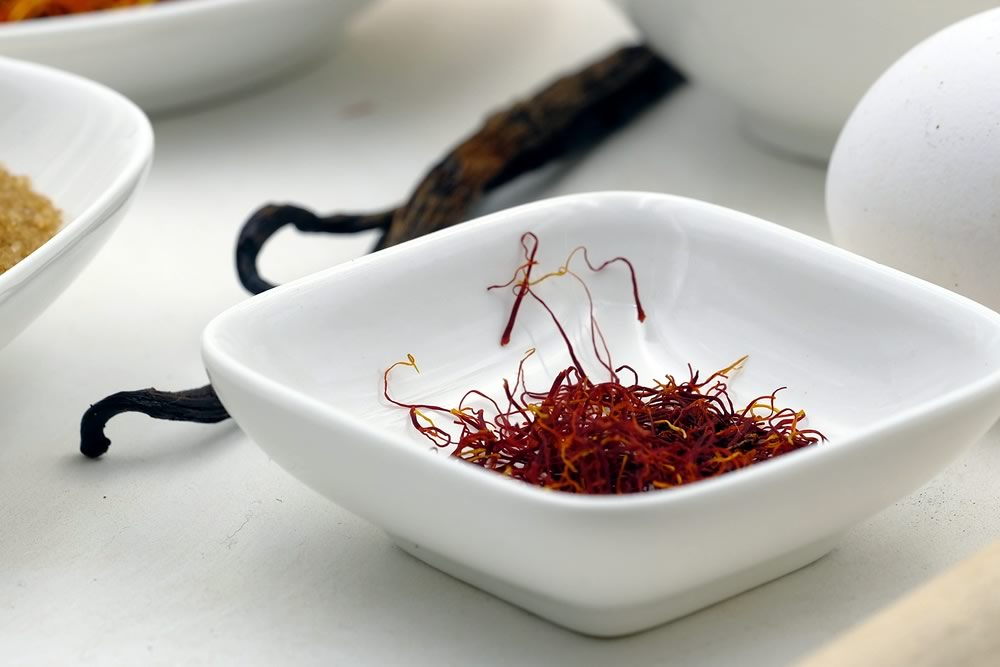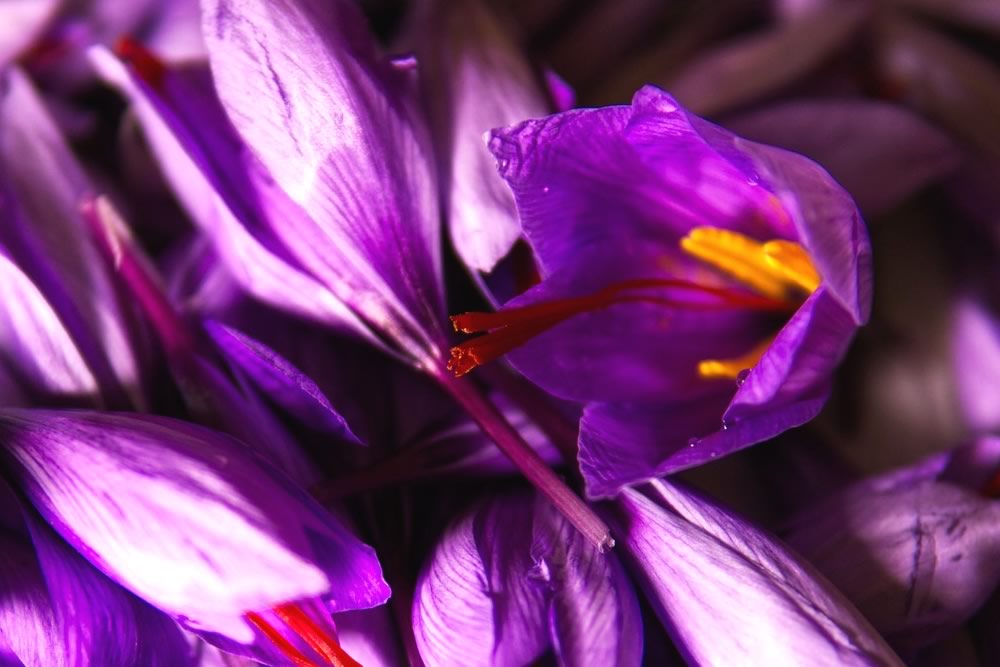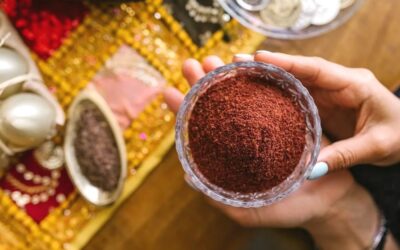Saffron, often referred to as the “golden spice,” is one of the most coveted and ancient spices in the world. Its vibrant color, distinctive flavor, and medicinal properties have made it a treasured ingredient in cuisines, traditional medicine, and cultural practices across the globe.
The Origins of Saffron
Saffron is derived from the stigmas of the Crocus sativus flower, commonly known as the saffron crocus. Native to the Mediterranean, Iran, and parts of India, saffron’s history dates back over 3,000 years. Ancient civilizations such as the Greeks, Persians, and Egyptians prized saffron for its culinary, medicinal, and ceremonial uses.
The Harvesting Process
One of the reasons saffron is so expensive is the labor-intensive harvesting process. Each flower produces only three stigmas, which must be hand-picked. It takes approximately 75,000 flowers to produce just one pound of saffron. This meticulous process, combined with the delicate nature of the spice, contributes to its high value.
Types of Saffron
Saffron quality varies depending on how it is processed and the part of the stigma used. Here are the main types of saffron:
- Super Negin: This is the highest quality saffron, consisting of long, thick red threads with no yellow or orange parts. It has the strongest aroma, color, and flavor.
- Negin: Slightly lower in quality than Super Negin, it still consists of red stigmas with minimal yellow portions and is highly valued.
- Sargol: This type contains only the red part of the stigma, offering excellent quality and potency, though the threads are shorter.
- Pushal: This saffron includes both the red stigmas and some yellow parts, making it less potent but more affordable.
- Konj (or White Saffron): These are the white or yellowish parts of the saffron threads left after separating the red stigmas. While less aromatic, they’re sometimes used in teas and infusions.

The Best Types of Saffron
Among these, Super Negin and Negin are considered the best due to their superior quality, vibrant color, strong aroma, and rich flavor. They are ideal for culinary and medicinal uses where the highest potency is required.
Saffron and Honey: A Perfect Blend
Saffron is often added to honey to combine the health benefits and flavors of both ingredients. This combination creates a luxurious and nutrient-rich product that is enjoyed for both its taste and medicinal properties.
Why Saffron is Added to Honey
- Enhanced Flavor: The floral and earthy notes of saffron complement the natural sweetness of honey, creating a unique and pleasant taste.
- Nutritional Synergy: Both saffron and honey are rich in antioxidants and bioactive compounds, enhancing each other’s benefits.
- Traditional Medicine: This blend has been used in Ayurvedic and Persian medicine for centuries to treat various ailments.
Health Benefits of Honey with Saffron
- Boosts Immunity: The combination is rich in antioxidants that help strengthen the immune system.
- Promotes Digestive Health: It aids in digestion and soothes the stomach.
- Improves Mood: Saffron is known for its mood-enhancing properties, while honey provides a quick source of energy.
- Supports Skin Health: When consumed or applied topically, it can help in achieving a radiant complexion.
- Relieves Cold and Cough: Both ingredients have anti-inflammatory and antimicrobial properties, making them effective against common colds.
> You can also buy Saffron Honey mix from us.

Taste Profile
The blend of saffron and honey is not only nutritious but also delicious. The subtle floral notes of saffron enhance the sweetness of honey, resulting in a rich and exotic flavor that pairs well with teas, desserts, and even toast.
Potential Health Risks
While generally safe, there are a few considerations:
- Allergic Reactions: Some individuals may be allergic to either saffron or honey.
- Overconsumption: Excessive intake of saffron can lead to dizziness, nausea, or even toxicity. Honey, being high in natural sugars, should also be consumed in moderation.
- Pregnancy and Breastfeeding: Pregnant and breastfeeding women should consult a doctor before consuming saffron in large amounts.
Culinary Uses
Saffron’s unique flavor profile—a blend of floral, earthy, and slightly sweet notes—makes it a sought-after ingredient in global cuisines. In Indian dishes like biryani, Persian stews, Spanish paella, and Italian risotto alla Milanese, saffron imparts its golden hue and rich taste. Beyond savory dishes, saffron is also used in desserts such as cakes, puddings, and ice creams.
Health Benefits
Saffron isn’t just a culinary treasure; it’s also renowned for its medicinal properties. Rich in antioxidants, saffron has been linked to numerous health benefits, including:
- Mood Enhancement: Studies suggest saffron can help alleviate symptoms of depression and anxiety.
- Improved Eye Health: It may protect against age-related macular degeneration.
- Boosted Immunity: Saffron’s antioxidants help combat oxidative stress and support immune function.
- Enhanced Digestion: It has been traditionally used to aid digestion and improve appetite.
Cultural Significance
In addition to its culinary and medicinal uses, saffron holds cultural and spiritual significance. In Indian and Persian traditions, saffron is used in religious ceremonies and as a natural dye for fabrics. In many cultures, it symbolizes purity, wealth, and health.
How to Use Saffron
To maximize saffron’s flavor and color, it’s often recommended to steep the threads in warm water, milk, or broth before adding them to a dish. This releases the spice’s essential oils and ensures even distribution of its properties.
Tips for Buying Saffron
When purchasing saffron, quality matters. Look for deep red threads with minimal yellowing and avoid powdered saffron, which may be adulterated. Authentic saffron should have a strong aroma and a slightly bitter taste.
Buy best quality Negin Saffron and Super Negin Saffron in Dhaka Bangladesh.
Conclusion
Saffron’s journey from the delicate crocus flower to your kitchen is a testament to its unparalleled value and appeal. Whether you use it to elevate a dish, improve your health, or participate in a cultural tradition, saffron continues to be a symbol of luxury, history, and wellness. When paired with honey, it creates a powerful and delicious blend that offers a myriad of health benefits with minimal risks.

